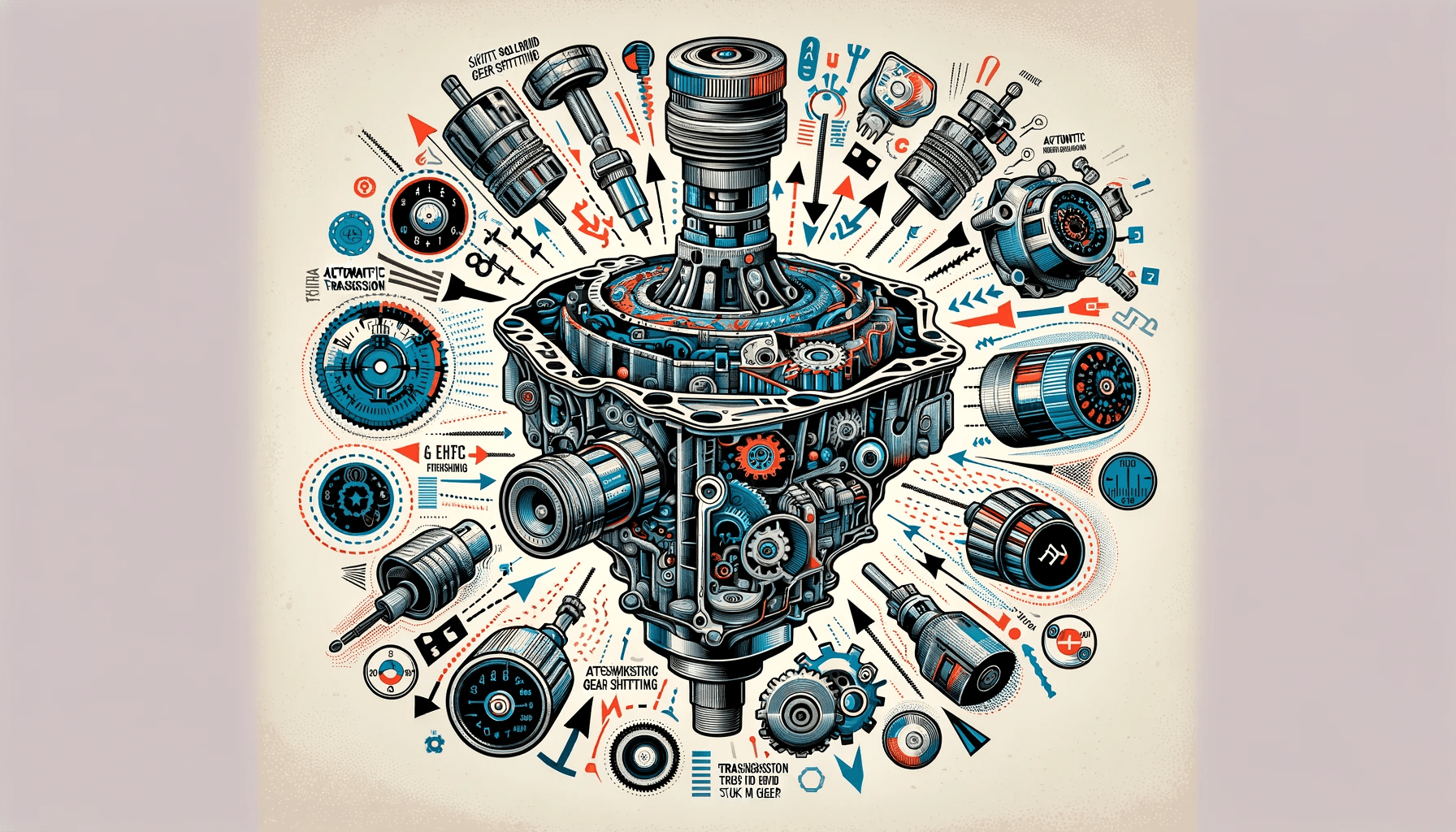Key Takeaways:
| Symptom | Potential Cause | Immediate Action |
|---|---|---|
| Delayed Gear Shifting | Faulty Shift Solenoid | Diagnose with OBD2 Scanner |
| Erratic Shifting | Worn Seals or Dirty Fluid | Transmission Fluid Change |
| Gear Skipping | Clogged or Damaged Solenoid | Solenoid Replacement |
| Stuck in Gear | Defective Solenoid | Professional Inspection |
| Limp Mode Activation | Solenoid Malfunction | Cease Driving, Consult Mechanic |
| Transmission Warning Light | Solenoid Electrical Issue | Use Diagnostic Tools |
| Check Engine Light | General Transmission Malfunction | Retrieve Trouble Codes |
Shift Solenoid Problems: Navigating the Complex World of Automatic Transmissions
When your vehicle starts exhibiting signs of transmission trouble, such as delayed gear shifting or erratic gear selection, it could be indicative of a shift solenoid problem. This critical component, an electromagnet within your transmission system, is responsible for controlling the flow of hydraulic fluid to engage the correct gear set. Understandably, when a solenoid malfunctions, it compromises the seamless operation of your vehicle’s transmission, leading to symptoms that can range from the inconvenient to the downright unsafe.
Recognizing the Signs
Before delving into complex repairs or replacements, it’s crucial to confirm whether a shift solenoid is indeed the culprit. Symptoms can manifest in various forms:
- Delayed Gear Shifting: This is often the most noticeable sign, where there’s a pronounced pause when switching from park to drive or during gear transitions.
- Erratic Shifting: If your vehicle unpredictably jumps gears or doesn’t maintain consistent shifting patterns, it might signal solenoid issues.
- Gear Skipping: Missing gears during shifting can indicate a solenoid unable to engage the necessary gear.
- Transmission Stuck in Gear: A clear indicator of a solenoid failure is when your vehicle refuses to shift out of a particular gear.
- Transmission Warning Light: Many vehicles are equipped with a transmission warning light, which, when illuminated alongside other symptoms, can point towards a shift solenoid malfunction.
A more comprehensive look into these symptoms can be found in our detailed guide on tackling transmission troubles.
Diagnosing the Issue
An accurate diagnosis generally begins with using an OBD2 scanner to read trouble codes from the transmission control module. Common codes associated with shift solenoid issues include P0750 for Shift Solenoid A malfunction or P0755 for issues with Shift Solenoid B. For those who prefer DIY approaches, our guide on transmission sensor repairs provides valuable insight.

Repair or Replace?
The repair route largely depends on the solenoid’s condition. In some instances, a transmission fluid change or a flush can resolve the issue, especially if it’s related to fluid contamination or clogging. However, if the solenoid itself is damaged, replacement is typically the only viable solution. For an in-depth exploration of replacement tips, see our clutch replacement tips.
Cost Considerations
The cost of solenoid replacement varies, but it’s an investment in your vehicle’s longevity. Ignoring the issue can lead to more severe transmission damage, potentially incurring higher expenses. For budgeting advice, visit our guide on common car repairs.
Preventative Measures
Regular maintenance, including fluid checks and changes, is crucial in preventing solenoid problems. Adhering to the manufacturer’s maintenance schedule can also go a long way. For tips on maintaining your transmission fluid, check out our article on fluid change intervals for transmission.
In summary, shift solenoid problems can significantly impact your vehicle’s performance. Timely intervention, guided by diagnostic tools and professional advice, can help mitigate these issues efficiently. For more detailed information on manual versus automatic transmission repair techniques, consider our article on transmission repair techniques.